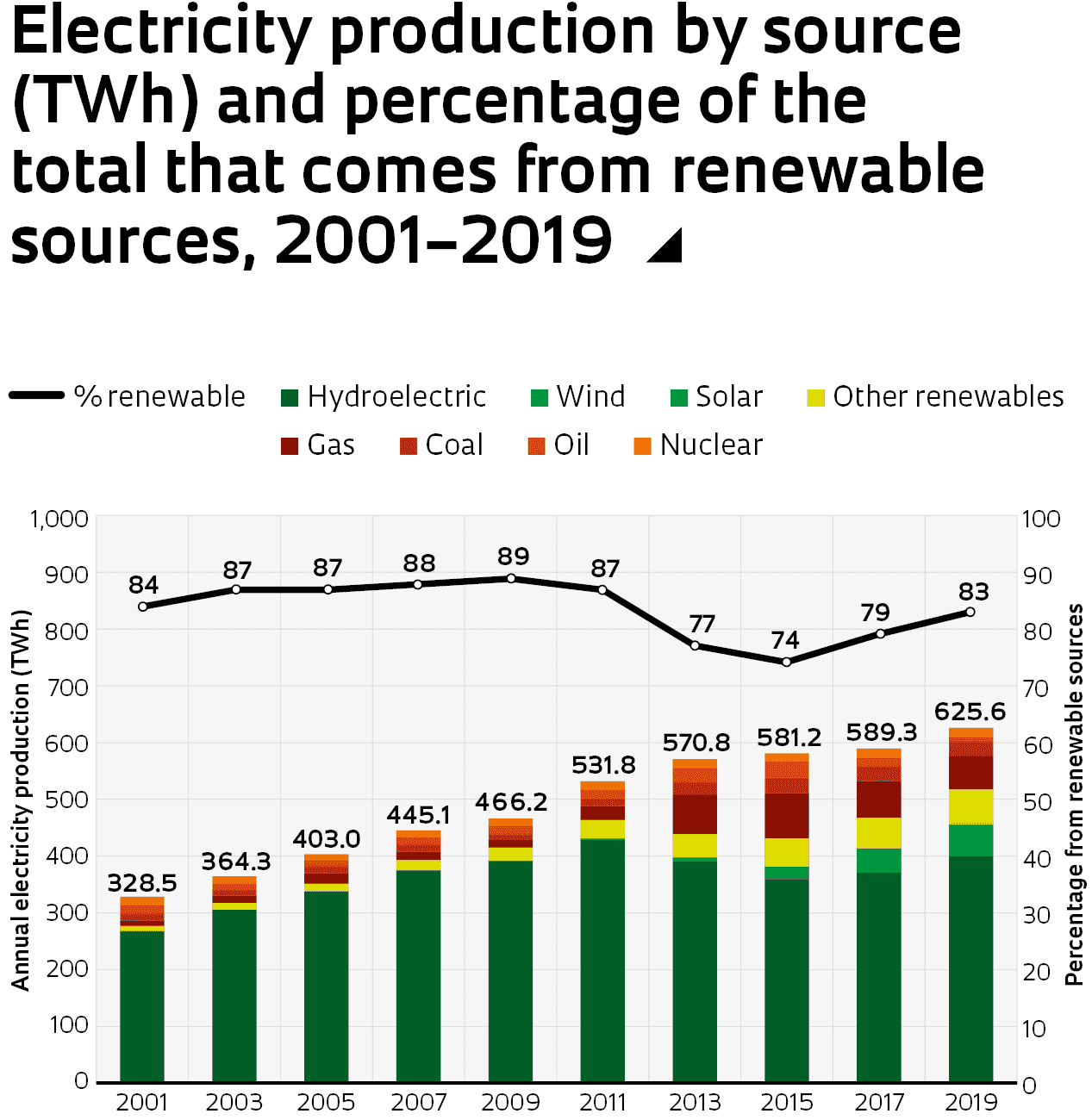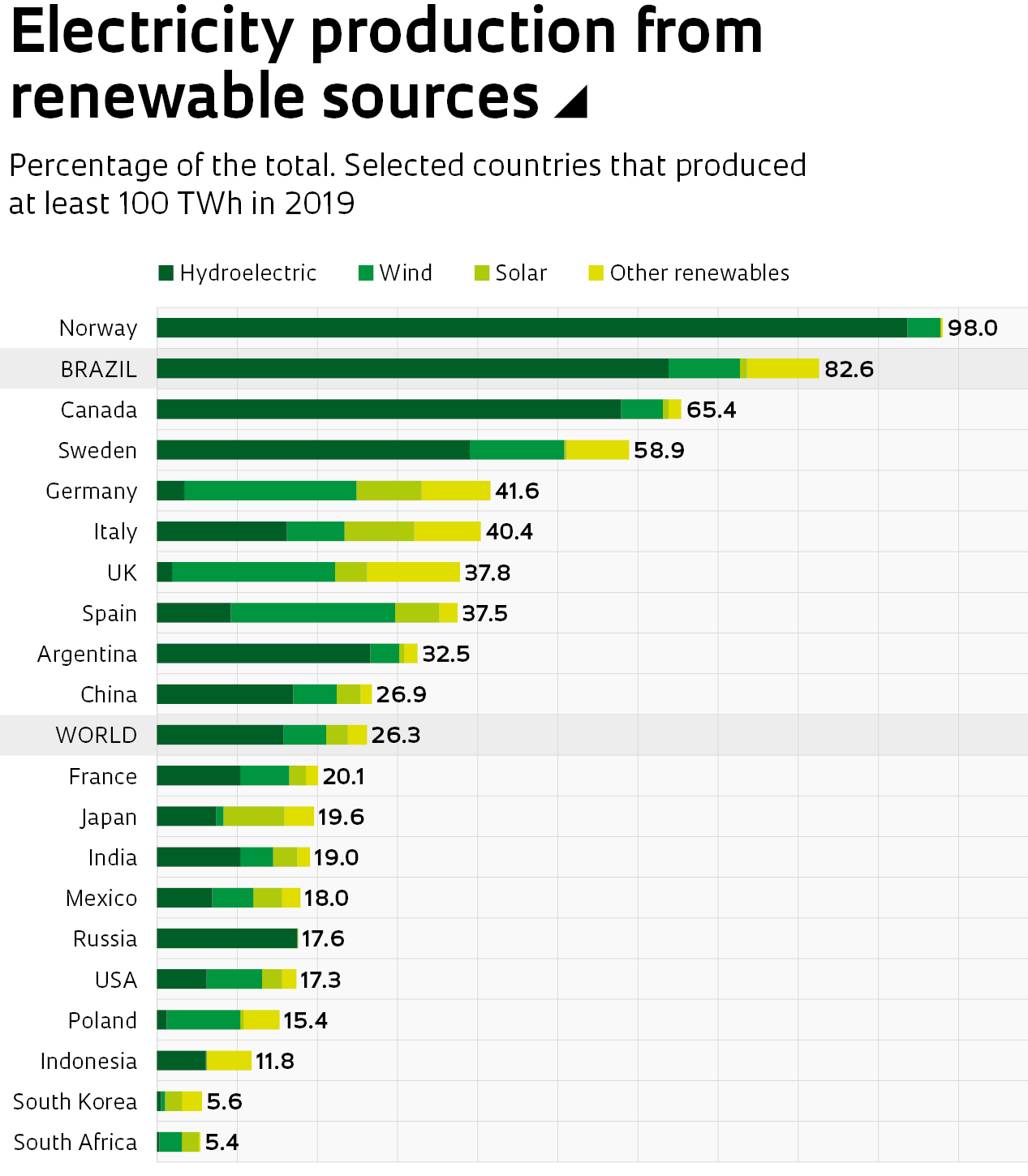- Brazil’s annual electricity production increased from 329 terawatt-hours (TWh) in 2001 to 626 TWh in 2019, an increase of 90%. Between 2016 and 2019, production grew by 8.1%, more than double the country’s economic growth in the same period, which was 3.6% (GDP)
- The proportion generated by hydroelectric, wind, solar, and other renewable sources (in Brazil’s case, this is mostly biomass) was 84% in 2001 and 83% in 2019
- Hydroelectricity accounted for 64% of the total in 2019, having fallen continuously over the period. The proportion generated from other renewable sources more than doubled, reaching 18.8%. Wind energy accounted for 8.9%, solar energy, 0.9%, and other renewables (mostly biomass), 9.0%
- Thermoelectricity produced from gas represented the second largest share of the total (9.4%), followed by coal (4.1%), nuclear (2.6%), and oil (1.3%)

- Brazil produced the 7th most electricity in the world in 2019, at 626 TWh. China (7,445 TWh) and the USA (4,387 TWh) were top, accounting for 44% of the energy produced worldwide in 2019
- Of the 35 countries with at least 100 TWh produced in 2019, Brazil, with 83% generated from renewable sources, is second only behind Norway, which was 98% renewable
- The proportion of all the electricity produced worldwide that came from renewable sources was 26%, equal to the percentage in China
- Only five of the major producers—Norway, Brazil, Canada, Venezuela (not included in the graph), and Sweden—generate more than 50% of their electricity from renewable sources
- Globally, the most used source was coal, generating 9,824 TWh (37% of the total), followed by gas (6,298 TWh, 24%), hydroelectric (4,222 TWh, 16%) and nuclear (2,796 TWh, 10%). Other renewable sources accounted for just 10% of the total

SOURCES GDP: IBGE. Electricity production: Our World in Data, based at the University of Oxford. https://ourworldindata.org/grapher/electricity-production-by-source (accessed on 10/12/2020)
Republish
